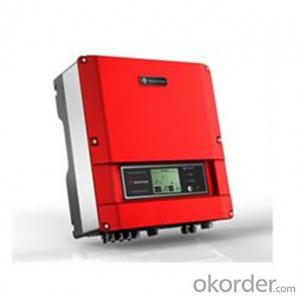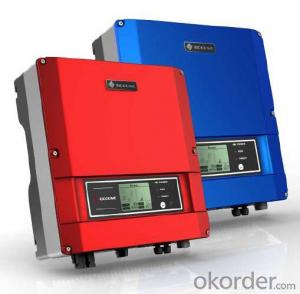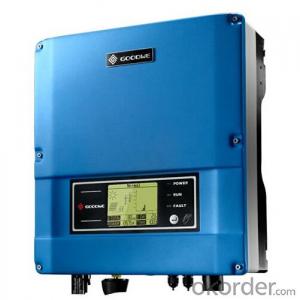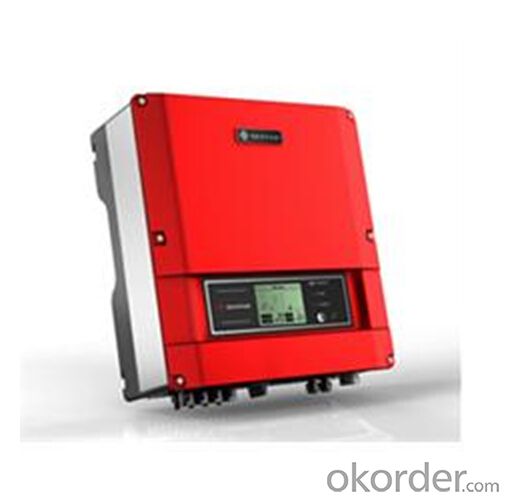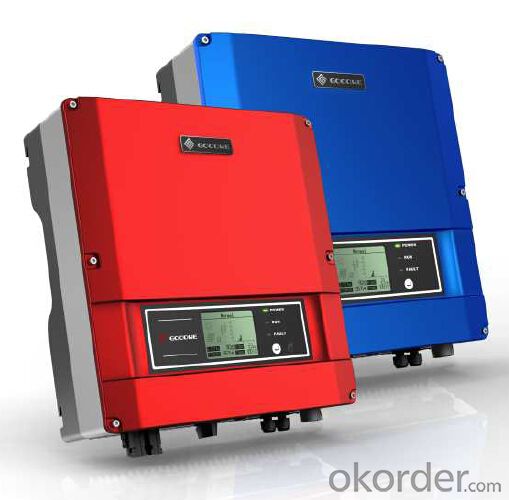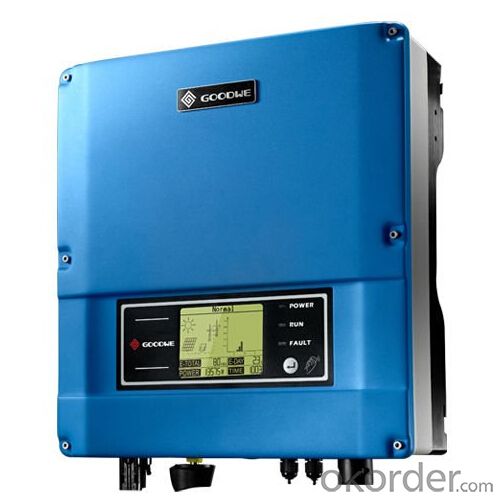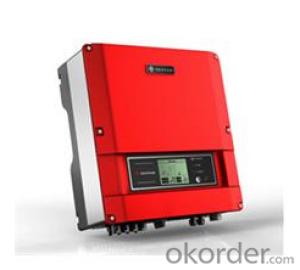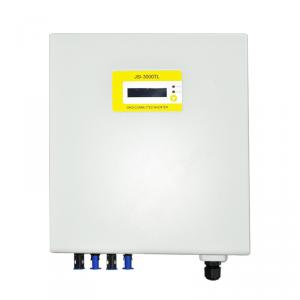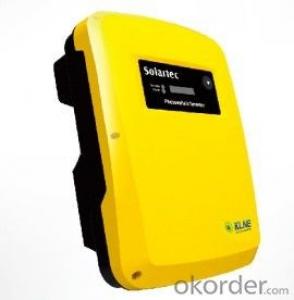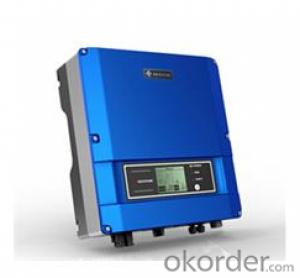3 in 1 Solar Inverter GW3600-DS On Grid
OKorder Service Pledge
Quality Product, Order Online Tracking, Timely Delivery
OKorder Financial Service
Credit Rating, Credit Services, Credit Purchasing
You Might Also Like
GW3600-DS
GW3600-DS photovoltaic inverter is suitable for home rooftop photovoltaic system, designed under modern industrial concept.
There are three colors for option with fashionable appearance.
This model uses digital control technology to achieve Dual-lines MPP tracking. The maximum conversion efficiency is up to 97.6%, THDi is less than 1.5% and the maximum output power is 3600W.
It is suitable for the photovoltaic system which open-circuit voltage is less than 580V.
Datasheet

- Q: Can a solar inverter be used in mobile or portable solar systems?
- Yes, a solar inverter can be used in mobile or portable solar systems. Solar inverters are essential components that convert the direct current (DC) generated by solar panels into alternating current (AC) that can be used to power various devices. They are designed to be adaptable and can be used in a wide range of applications, including mobile or portable solar systems. This allows individuals to harness solar energy and use it to power their devices wherever they go, making it a convenient and sustainable solution for on-the-go power needs.
- Q: How does a solar inverter convert DC power to AC power?
- A solar inverter converts DC power to AC power by utilizing a two-step process. First, it converts the DC power generated by the solar panels into a high-frequency AC current. Then, it uses a transformer to increase the voltage and shape the AC waveform to match the grid's requirements. This process allows the solar energy to be fed into the electrical grid or used directly in homes and businesses.
- Q: Can a solar inverter be used with dual-axis solar trackers?
- Yes, a solar inverter can be used with dual-axis solar trackers. A solar inverter is responsible for converting the direct current (DC) generated by the solar panels into alternating current (AC) that can be used to power electrical devices or be fed into the grid. The dual-axis solar trackers enable the solar panels to follow the sun's movement in both horizontal and vertical directions, maximizing their exposure to sunlight throughout the day. The solar inverter can still perform its function of converting DC to AC regardless of the type of solar tracking system used.
- Q: How does a solar inverter protect against overvoltage and overcurrent?
- A solar inverter protects against overvoltage by constantly monitoring the voltage level of the solar panels. If the voltage exceeds a predetermined threshold, the inverter will automatically reduce the power output or shut down to prevent damage. Similarly, to protect against overcurrent, the inverter continuously monitors the current flowing through the system. If the current surpasses a safe limit, the inverter will limit the output or shut down to prevent overheating and potential hazards.
- Q: Can a solar inverter be used with a solar-powered outdoor lighting system?
- Yes, a solar inverter can be used with a solar-powered outdoor lighting system. A solar inverter is responsible for converting the direct current (DC) generated by solar panels into alternating current (AC) that can be used to power various devices, including outdoor lighting systems. By connecting the solar panels to a solar inverter, the generated energy can be efficiently transformed and utilized for powering the lighting system, ensuring sustainable and renewable lighting solutions.
- Q: How does the temperature affect the performance of a solar inverter?
- The temperature affects the performance of a solar inverter by impacting its efficiency and power output. High temperatures can cause the inverter to overheat, leading to a decrease in its efficiency and overall performance. This can result in reduced power generation and potential damage to the inverter. Conversely, lower temperatures can enhance the inverter's efficiency and power output, allowing it to perform optimally. Therefore, maintaining suitable operating temperatures is crucial for maximizing the performance and longevity of a solar inverter.
- Q: How does a hybrid solar inverter work?
- A hybrid solar inverter works by converting the direct current (DC) electricity generated by solar panels into alternating current (AC) electricity that can be used to power household appliances or fed back into the grid. It also has the capability to store excess solar energy in batteries for later use, ensuring continuous power supply even during periods of low sunlight or power outages. This enables users to maximize their solar energy utilization and reduce dependence on the grid.
- Q: Can a solar inverter be used in regions with high humidity or moisture levels?
- Yes, solar inverters can be used in regions with high humidity or moisture levels. However, it is important to ensure that the inverters are designed and built to withstand such conditions. Waterproof or moisture-resistant features may be necessary to protect the inverters from potential damage caused by moisture or humidity. Regular maintenance and monitoring are also recommended to ensure optimal performance in such environments.
- Q: How does a solar inverter handle voltage flicker?
- A solar inverter handles voltage flicker by constantly monitoring the grid voltage and adjusting its output to maintain a stable voltage. It uses advanced control algorithms to quickly respond to fluctuations and minimize the impact of voltage flicker on the connected devices.
- Q: What is the role of a solar inverter in anti-islanding protection?
- The role of a solar inverter in anti-islanding protection is to detect and prevent the occurrence of islanding. Islanding is a situation where a solar PV system continues to generate power and feed it into the grid during a power outage, which can pose a safety risk to utility workers attempting to restore power. The solar inverter monitors the grid voltage and frequency and when it detects an abnormality, such as a loss of grid connection, it quickly disconnects the PV system from the grid. This anti-islanding protection feature ensures that the solar system does not operate independently and helps maintain the safety and stability of the electrical grid.
Send your message to us
3 in 1 Solar Inverter GW3600-DS On Grid
OKorder Service Pledge
Quality Product, Order Online Tracking, Timely Delivery
OKorder Financial Service
Credit Rating, Credit Services, Credit Purchasing
Similar products
Hot products
Hot Searches
Related keywords
